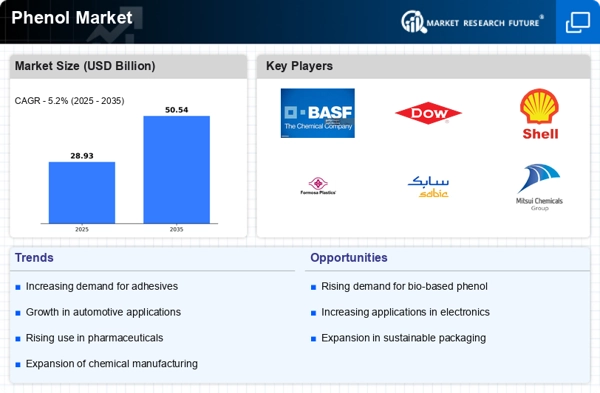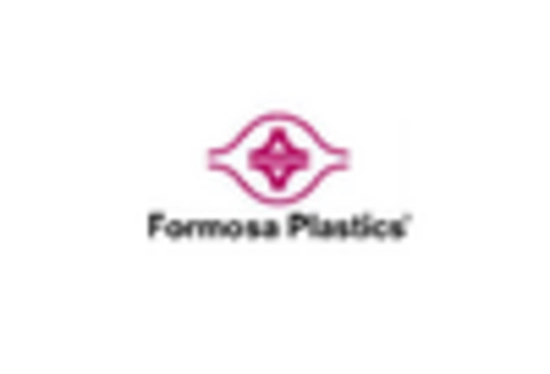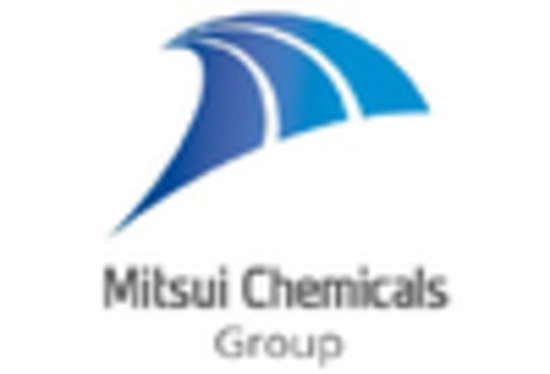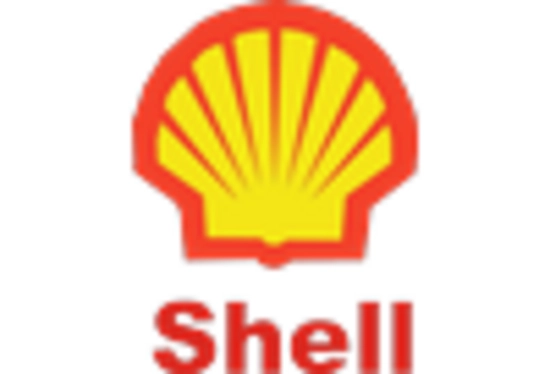-
EXECUTIVE SUMMARY
-
MARKET INTRODUCTION
-
Definition
-
Scope of the Study
- Research Objective
- Assumptions
- Limitations
-
RESEARCH METHODOLOGY
-
Overview
-
Data Mining
-
Secondary Research
-
Primary Research
- Primary Interviews and Information Gathering Process
- Breakdown of Primary Respondents
-
Forecasting Model
-
Market Size Estimation
- Bottom-Up Approach
- Top-Down Approach
-
Data Triangulation
-
Validation
-
MARKET DYNAMICS
-
Overview
-
Drivers
-
Restraints
-
Opportunities
-
MARKET FACTOR ANALYSIS
-
Value Chain Analysis
-
Porter’s Five Forces Analysis
- Bargaining Power of Suppliers
- Bargaining Power of Buyers
- Threat of New Entrants
- Threat of Substitutes
- Intensity of Rivalry
-
COVID-19 Impact Analysis
- Market Impact Analysis
- Regional Impact
- Opportunity and Threat Analysis
-
GLOBAL PHENOL MARKET, BY APPLICATION
-
Overview
-
Bisphenol A
-
Phenolic Resin
-
Caprolactum
-
Alkyl Phenyls
-
Others
-
GLOBAL PHENOL MARKET, BY END USER
-
Overview
-
Chemical
-
Construction
-
Automotive
-
Electronic Communication
-
Metallurgy
-
Others
-
GLOBAL PHENOL MARKET, BY REGION
-
Overview
-
North America
- US
- Canada
-
Europe
- Germany
- France
- UK
- Italy
- Spain
- Rest of Europe
-
Asia-Pacific
- China
- India
- Japan
- South Korea
- Australia
- Rest of Asia-Pacific
-
Rest of the World
- Middle East
- Africa
- Latin America
-
COMPETITIVE LANDSCAPE
-
Overview
-
Competitive Analysis
-
Market Share Analysis
-
Major Growth Strategy in the Global Phenol Market,
-
Competitive Benchmarking
-
Leading Players in Terms of Number of Developments in the Global Phenol Market,
-
Key developments and Growth Strategies
- New Product Launch/Service Deployment
- Merger & Acquisitions
- Joint Ventures
-
Major Players Financial Matrix
- Sales & Operating Income, 2022
- Major Players R&D Expenditure. 2022
-
COMPANY PROFILES
-
Royal Dutch Shell
- Company Overview
- Financial Overview
- Products Offered
- Key Developments
- SWOT Analysis
- Key Strategies
-
Solvay SA
- Company Overview
- Financial Overview
- Products Offered
- Key Developments
- SWOT Analysis
- Key Strategies
-
Deepak Nitrite Limited
- Company Overview
- Financial Overview
- Products Offered
- Key Developments
- SWOT Analysis
- Key Strategies
-
INEOS Group Limited
- Company Overview
- Financial Overview
- Products Offered
- Key Developments
- SWOT Analysis
- Key Strategies
-
ALTIVIA Chemicals
- Company Overview
- Financial Overview
- Products Offered
- Key Developments
- SWOT Analysis
- Key Strategies
-
Sasol Chemicals
- Company Overview
- Financial Overview
- Products Offered
- Key Developments
- SWOT Analysis
- Key Strategies
-
Mitsubishi Corporation
- Company Overview
- Financial Overview
- Products Offered
- Key Developments
- SWOT Analysis
- Key Strategies
-
Domo Chemicals
- Company Overview
- Financial Overview
- Products Offered
- Key Developments
- SWOT Analysis
- Key Strategies
-
APPENDIX
-
References
-
Related Reports
-
LIST OF TABLES
-
GLOBAL PHENOL MARKET, SYNOPSIS, 2025-2034
-
GLOBAL PHENOL MARKET, ESTIMATES & FORECAST, 2025-2034 (USD BILLION)
-
GLOBAL PHENOL MARKET, BY APPLICATION, 2025-2034 (USD BILLION)
-
GLOBAL PHENOL MARKET, BY END USER, 2025-2034 (USD BILLION)
-
NORTH AMERICA: PHENOL MARKET, BY APPLICATION, 2025-2034 (USD BILLION)
-
NORTH AMERICA: PHENOL MARKET, BY END USER, 2025-2034 (USD BILLION)
-
US: PHENOL MARKET, BY APPLICATION, 2025-2034 (USD BILLION)
-
US: PHENOL MARKET, BY END USER, 2025-2034 (USD BILLION)
-
CANADA: PHENOL MARKET, BY APPLICATION, 2025-2034 (USD BILLION)
-
CANADA: PHENOL MARKET, BY END USER, 2025-2034 (USD BILLION)
-
EUROPE: PHENOL MARKET, BY APPLICATION, 2025-2034 (USD BILLION)
-
EUROPE: PHENOL MARKET, BY END USER, 2025-2034 (USD BILLION)
-
GERMANY: PHENOL MARKET, BY APPLICATION, 2025-2034 (USD BILLION)
-
GERMANY: PHENOL MARKET, BY END USER, 2025-2034 (USD BILLION)
-
FRANCE: PHENOL MARKET, BY APPLICATION, 2025-2034 (USD BILLION)
-
FRANCE: PHENOL MARKET, BY END USER, 2025-2034 (USD BILLION)
-
ITALY: PHENOL MARKET, BY APPLICATION, 2025-2034 (USD BILLION)
-
ITALY: PHENOL MARKET, BY END USER, 2025-2034 (USD BILLION)
-
SPAIN: PHENOL MARKET, BY APPLICATION, 2025-2034 (USD BILLION)
-
SPAIN: PHENOL MARKET, BY END USER, 2025-2034 (USD BILLION)
-
UK: PHENOL MARKET, BY APPLICATION, 2025-2034 (USD BILLION)
-
UK: PHENOL MARKET, BY END USER, 2025-2034 (USD BILLION)
-
REST OF EUROPE: PHENOL MARKET, BY APPLICATION, 2025-2034 (USD BILLION)
-
REST OF EUROPE: PHENOL MARKET, BY END USER, 2025-2034 (USD BILLION)
-
ASIA-PACIFIC: PHENOL MARKET, BY APPLICATION, 2025-2034 (USD BILLION)
-
ASIA-PACIFIC: PHENOL MARKET, BY END USER, 2025-2034 (USD BILLION)
-
JAPAN: PHENOL MARKET, BY APPLICATION, 2025-2034 (USD BILLION)
-
JAPAN: PHENOL MARKET, BY END USER, 2025-2034 (USD BILLION)
-
CHINA: PHENOL MARKET, BY APPLICATION, 2025-2034 (USD BILLION)
-
CHINA: PHENOL MARKET, BY END USER, 2025-2034 (USD BILLION)
-
INDIA: PHENOL MARKET, BY APPLICATION, 2025-2034 (USD BILLION)
-
INDIA: PHENOL MARKET, BY END USER, 2025-2034 (USD BILLION)
-
AUSTRALIA: PHENOL MARKET, BY APPLICATION, 2025-2034 (USD BILLION)
-
AUSTRALIA: PHENOL MARKET, BY END USER, 2025-2034 (USD BILLION)
-
SOUTH KOREA: PHENOL MARKET, BY APPLICATION, 2025-2034 (USD BILLION)
-
SOUTH KOREA: PHENOL MARKET, BY END USER, 2025-2034 (USD BILLION)
-
REST OF ASIA-PACIFIC: PHENOL MARKET, BY APPLICATION, 2025-2034 (USD BILLION)
-
REST OF ASIA-PACIFIC: PHENOL MARKET, BY END USER, 2025-2034 (USD BILLION)
-
REST OF THE WORLD: PHENOL MARKET, BY APPLICATION, 2025-2034 (USD BILLION)
-
REST OF THE WORLD: PHENOL MARKET, BY END USER, 2025-2034 (USD BILLION)
-
MIDDLE EAST: PHENOL MARKET, BY APPLICATION, 2025-2034 (USD BILLION)
-
MIDDLE EAST: PHENOL MARKET, BY END USER, 2025-2034 (USD BILLION)
-
AFRICA: PHENOL MARKET, BY APPLICATION, 2025-2034 (USD BILLION)
-
AFRICA: PHENOL MARKET, BY END USER, 2025-2034 (USD BILLION)
-
LATIN AMERICA: PHENOL MARKET, BY APPLICATION, 2025-2034 (USD BILLION)
-
LATIN AMERICA: PHENOL MARKET, BY END USER, 2025-2034 (USD BILLION)
-
LIST OF FIGURES
-
RESEARCH PROCESS
-
MARKET STRUCTURE FOR THE GLOBAL PHENOL MARKET
-
MARKET DYNAMICS FOR THE GLOBAL PHENOL MARKET
-
GLOBAL PHENOL MARKET, SHARE (%), BY APPLICATION, 2022
-
GLOBAL PHENOL MARKET, SHARE (%), BY END USER, 2022
-
GLOBAL PHENOL MARKET, SHARE (%), BY REGION, 2022
-
NORTH AMERICA: PHENOL MARKET, SHARE (%), BY REGION, 2022
-
EUROPE: PHENOL MARKET, SHARE (%), BY REGION, 2022
-
ASIA-PACIFIC: PHENOL MARKET, SHARE (%), BY REGION, 2022
-
REST OF THE WORLD: PHENOL MARKET, SHARE (%), BY REGION, 2022
-
GLOBAL PHENOL MARKET: COMPANY SHARE ANALYSIS, 2022 (%)
-
ROYAL DUTCH SHELL: FINANCIAL OVERVIEW SNAPSHOT
-
ROYAL DUTCH SHELL: SWOT ANALYSIS
-
SOLVAY SA: FINANCIAL OVERVIEW SNAPSHOT
-
SOLVAY SA: SWOT ANALYSIS
-
DEEPAK NITRITE LIMITED: FINANCIAL OVERVIEW SNAPSHOT
-
DEEPAK NITRITE LIMITED: SWOT ANALYSIS
-
INEOS GROUP LIMITED: FINANCIAL OVERVIEW SNAPSHOT
-
INEOS GROUP LIMITED: SWOT ANALYSIS
-
ALTIVIA CHEMICALS: FINANCIAL OVERVIEW SNAPSHOT
-
ALTIVIA CHEMICALS: SWOT ANALYSIS
-
SASOL CHEMICALS: FINANCIAL OVERVIEW SNAPSHOT
-
SASOL CHEMICALS: SWOT ANALYSIS
-
MITSUBISHI CORPORATION: FINANCIAL OVERVIEW SNAPSHOT
-
MITSUBISHI CORPORATION: SWOT ANALYSIS
-
DOMO CHEMICALS: FINANCIAL OVERVIEW SNAPSHOT
-
DOMO CHEMICALS: SWOT ANALYSIS
-
"










Leave a Comment